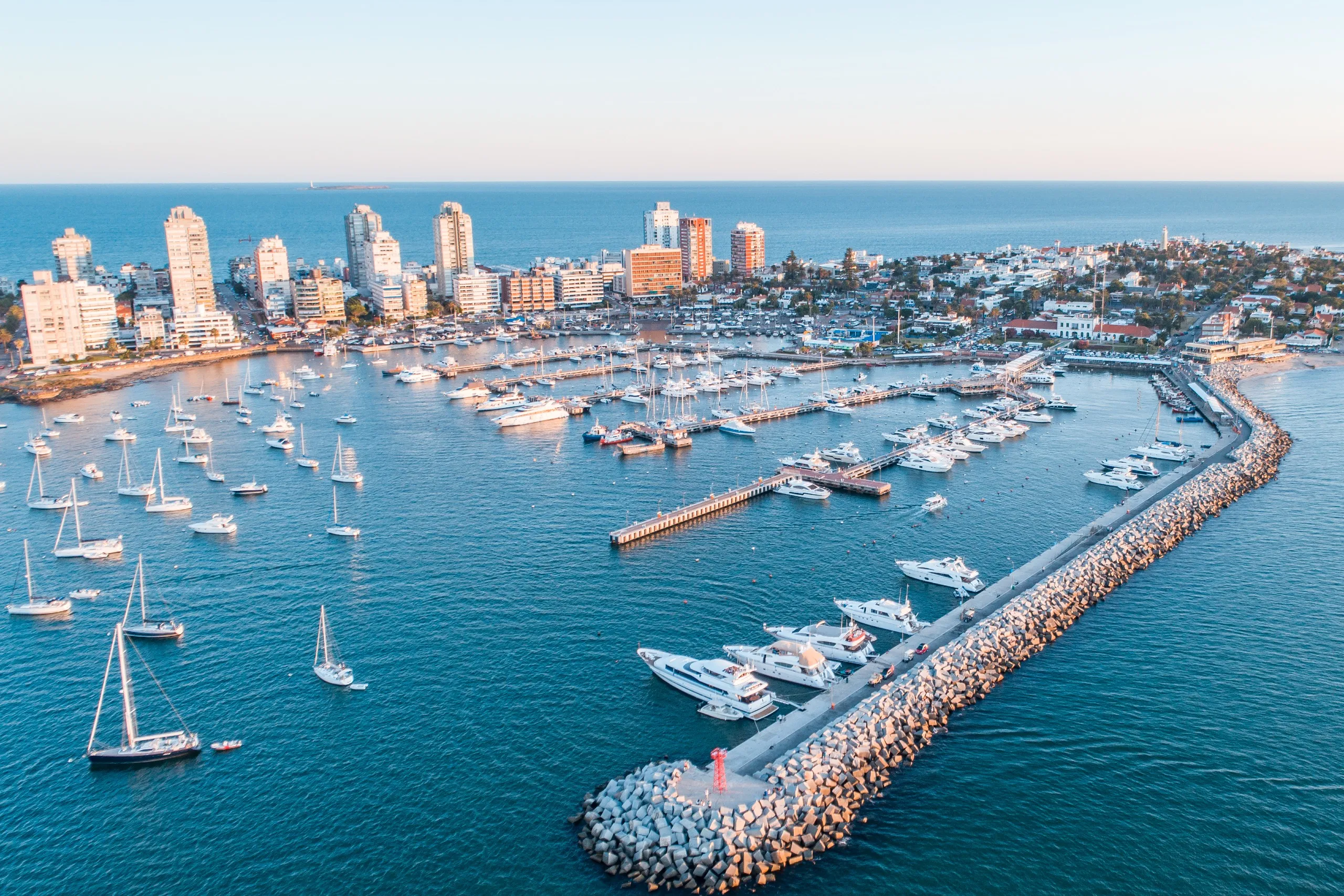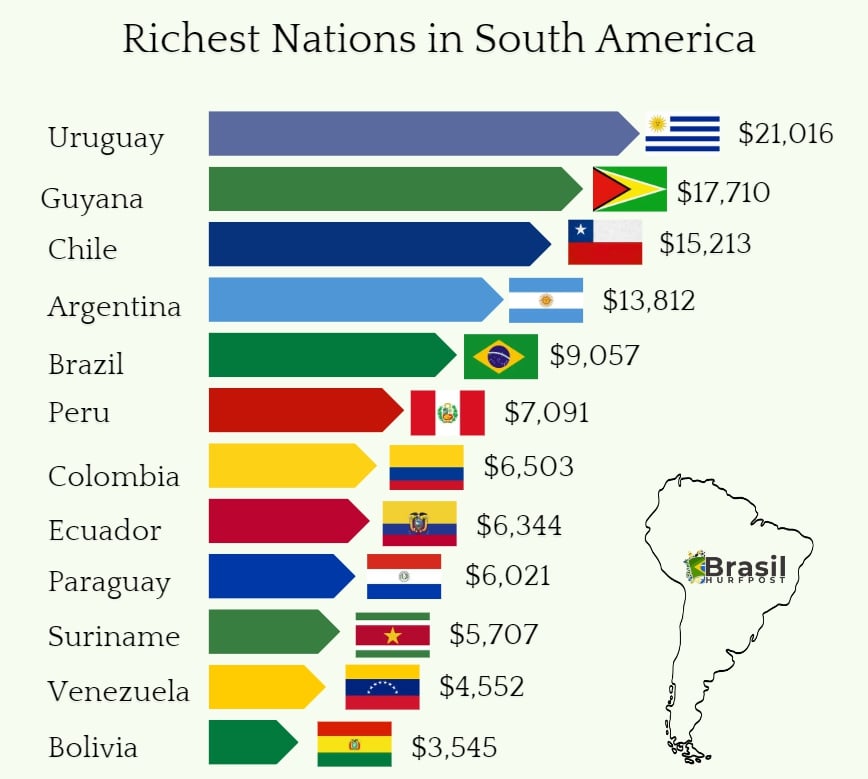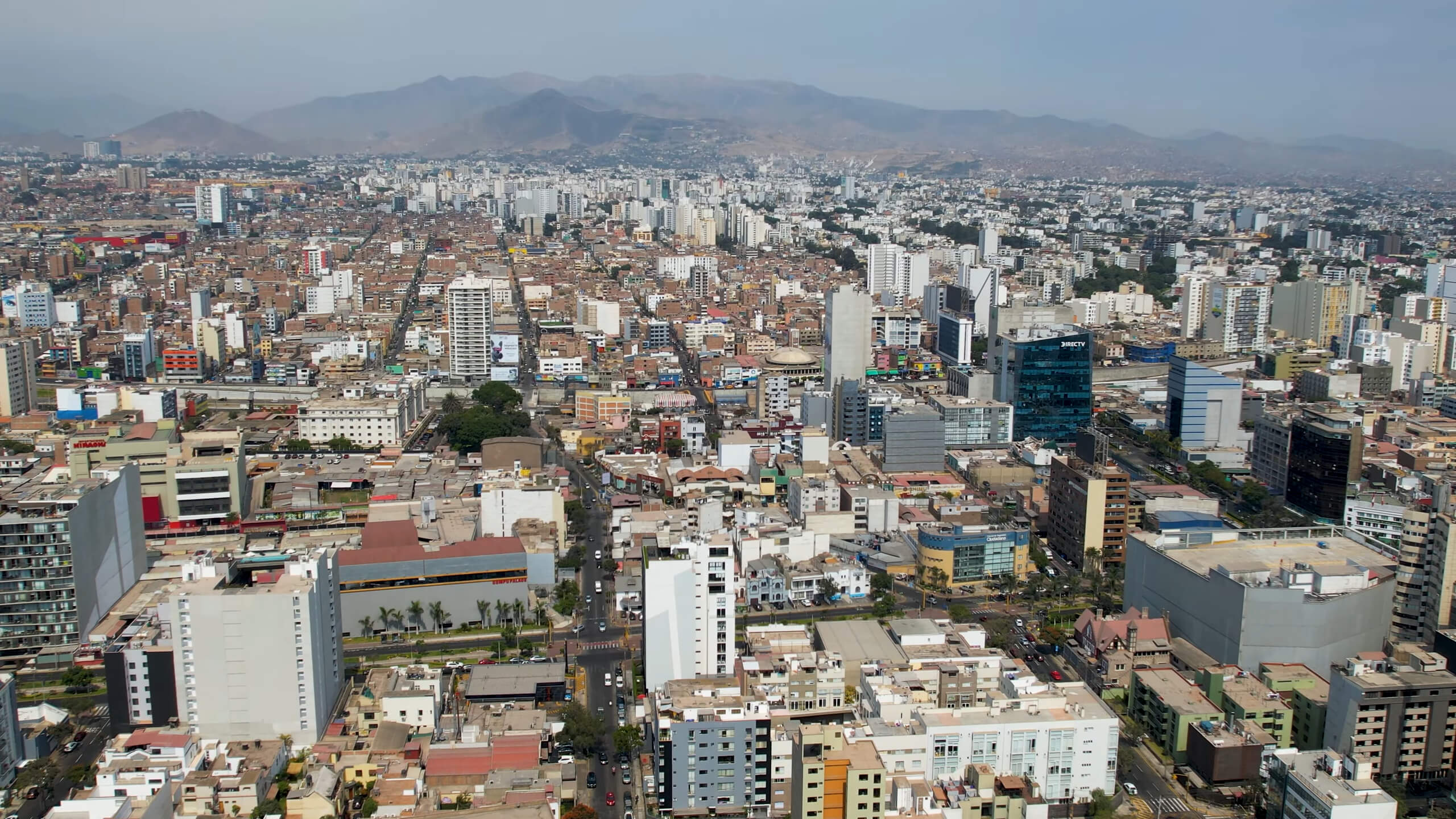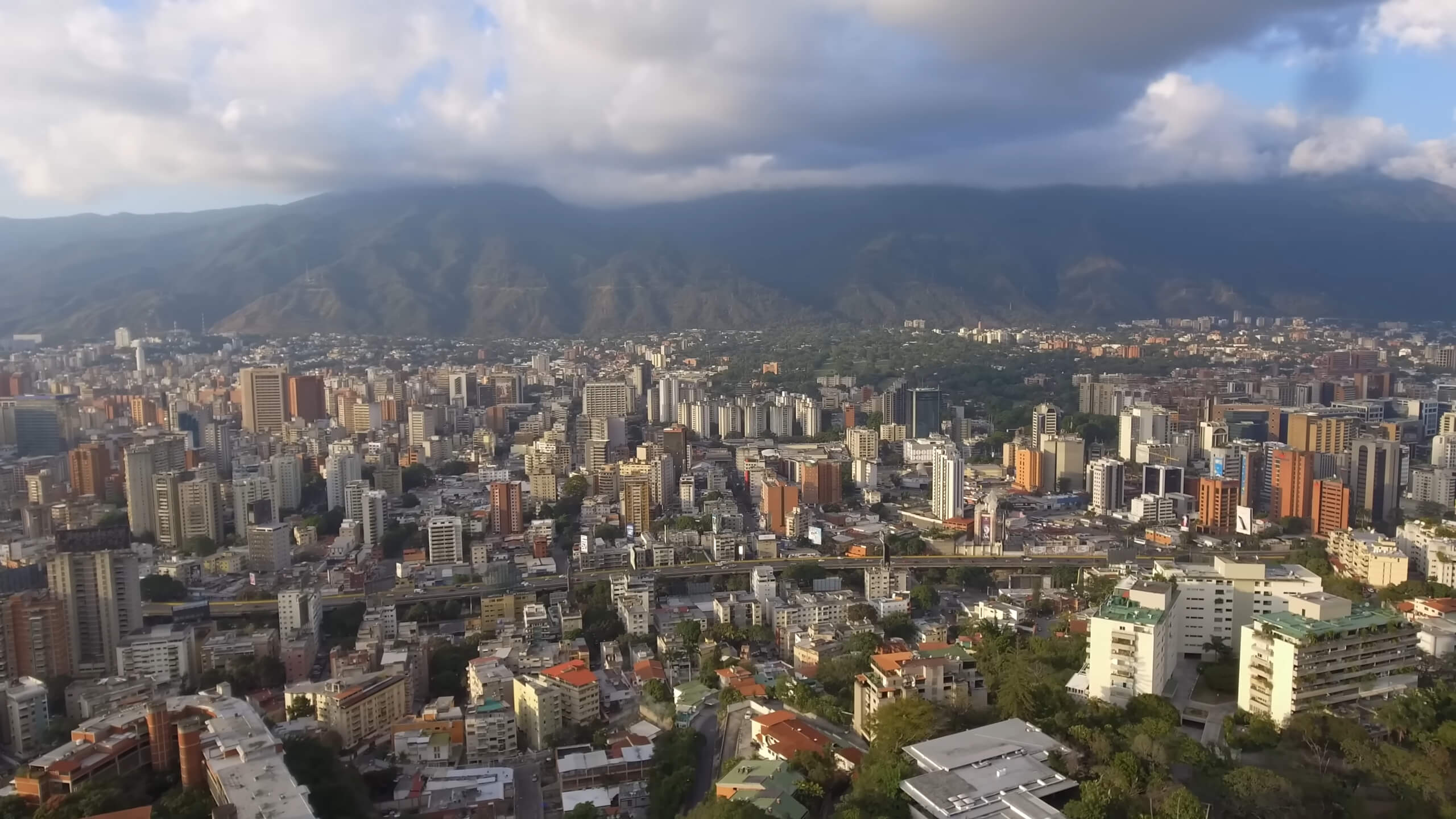
South America in 2025 shows a range of economies, each driven by different factors.
Some countries have built strong foundations through industries like agriculture, mining, and energy, allowing them to rise above the rest.
This ranking focuses on which nations are creating the most wealth per person.
Richest Countries in South America for 2025, Ranked by GDP Per Capita
- Uruguay – $21,016
- Guyana – $17,710
- Chile – $15,213
- Argentina – $13,812
- Brazil – $9,057
- Peru – $7,091
- Colombia – $6,503
- Ecuador – $6,344
- Paraguay – $6,021
- Suriname – $5,707
- Venezuela – $4,552
- Bolivia – $3,545

1. Uruguay
| Country | Uruguay |
|---|---|
| GDP per Capita | $21,016 |
| Population | 3.5 million |
| GDP (Nominal) | $82.61 billion |
| Main Industries | Agriculture, Renewable Energy, Tourism |
| 2025 Projected Growth | 3.2% |
Uruguay has emerged as the wealthiest country in South America in 2025 with a GDP per capita of $21,016.
The economy is marked by stable growth, with a projected 3.2% increase in GDP for the year.
Agriculture Sector
Agriculture remains one of the largest sectors, accounting for 7% of the total GDP. The country’s primary exports include beef, soybeans, and dairy products.
However, the severe drought of 2022–2023 caused a $1.88 billion loss (around 3% of GDP) due to diminished agricultural output.
Despite this setback, the sector is expected to rebound in 2025 as conditions improve, with beef exports alone playing a major role in economic recovery.
Renewable Energy Leadership
Uruguay is a global leader in renewable energy in South America, generating 98% of its electricity from renewable sources.
Wind energy accounted for 50.8% of total electricity generation, followed by hydroelectric power at 30.9%.
The country’s state-owned power company, UTE, became the nation’s largest exporter by revenue during this period, contributing $144.8 million in exports.
According to the Investment Climate Statement, Uruguay has become a leader in green hydrogen production, attracting significant foreign investments aimed at developing this industry to enhance its renewable energy portfolio and position itself as a global player in sustainable energy exports
Foreign Investment
Uruguay’s foreign direct investment (FDI) inflows reached $4.1 billion in 2023, a significant increase from the $2.2 billion reported in 2022.
Such growth is largely due to favorable investment policies, which grant foreign investors the same rights and incentives as local investors.
Key sectors attracting FDI include financial services, manufacturing, and agriculture. Spain, Argentina, and Switzerland are among the leading countries investing in Uruguay, with the financial and insurance sectors accounting for 27.8% of FDI inflows.
2. Guyana
| Country | Guyana |
|---|---|
| GDP per Capita | $17,710 |
| Population | 805,000 |
| GDP Growth | 34.3% |
| Main Industries | Oil, Gold, Agriculture |
| Oil Production | 620,000 barrels/day |
| FDI (2023) | $4 billion |
Guyana is projected to grow by 34.3% in 2025, fueled primarily by its expanding oil sector. Crude oil production reached 645,000 barrels per day, and the oil and natural gas industry accounted for 56% of the country’s GDP growth, with projections showing further growth beyond 1.2 million barrels per day by 2027. That makes it one of the largest producers in south America and worldwide.
Guyana’s oil revenue is expected to exceed $2.4 billion this year, significantly boosting government income and overall economic growth. Over the past five years, Guyana has seen an average annual GDP growth of 38.8%, making it the fastest-growing economy in the world.
Foreign Direct Investment (FDI)
Foreign investment is playing a critical role in Guyana’s rapid development. In 2023, FDI inflows surged to $4 billion, nearly doubling from previous years. Investors from the United States, China, and Europe are heavily involved in the oil sector, with growing interest in agriculture and manufacturing as well. This influx of capital is positioning Guyana as a key player in both the regional and global markets.
Diversification Challenges
While oil dominates the economy, accounting for more than 50% of GDP, efforts to diversify into sectors like agriculture and manufacturing have been slower than expected. Nonetheless, Guyana is rich in natural resources beyond oil, including gold and bauxite, which continue to contribute to the economy.
3. Chile
| Country | Chile |
|---|---|
| GDP per Capita | $15,213 |
| Population | 19.5 million |
| GDP Growth | 2.8% |
| Main Industries | Mining, Renewable Energy, Agriculture |
| Copper Production | 5.7 million tonnes |
| Lithium Production | Second largest in the world |
Chile is projected to grow by 2.8% in 2025, recovering from a sluggish 2023 where the economy faced inflationary pressures and global commodity price fluctuations. The recovery is supported by improvements in the mining sector and a focus on renewable energy investments.
Mining Dominance
Chile continues to dominate the global copper market, producing 5.7 million tonnes annually, making it the largest producer worldwide.
Copper remains the backbone of the Chilean economy, contributing significantly to GDP and export revenues. They are the biggest copper producer in South America.
In addition to copper, Chile is the second-largest producer of lithium, a critical resource for electric vehicles and renewable energy storage, which is vital for the global energy transition. The mining sector is further revitalized by new policies that streamline operations and address climate challenges, ensuring Chile maintains its leadership in global mining.
Chile’s lithium production is set to continue rising, with 39,000 metric tons produced in 2022, while its copper mining remains dominant as the largest in the world, critical for global energy transition, particularly in the development of wind turbines and solar farms.
Renewable Energy Growth
Chile is positioning itself as a renewable energy leader, with solar energy providing a substantial share of its electricity generation. The country ranks 6th globally for solar power generation, which is supported by the high solar radiation levels in northern Chile.
The government continues to push for increased investments in wind and solar energy to reduce dependence on fossil fuels and meet its carbon neutrality goals by 2050.
4. Argentina
| Country | Argentina |
|---|---|
| GDP per Capita | $13,812 |
| Population | 45 million |
| GDP Growth | -2.8% |
| Main Industries | Agriculture, Oil, Manufacturing |
| Inflation | 260% |
| Foreign Debt | $277 billion |
Argentina is expected to experience a 2.8% contraction in 2025, marking another challenging year for the country. This decline is primarily driven by soaring inflation, estimated to peak at 260% during the year, as well as economic adjustments aimed at stabilizing the country’s fiscal balance.
The inflation crisis and ongoing currency issues have deeply impacted private consumption, making economic recovery difficult in the short term.
Agriculture
Argentina remains one of the world’s largest producers of soybeans, corn, and wheat, with agriculture playing a critical role in the national economy. However, the sector has faced several challenges in recent years, including droughts that affected crop yields in 2023, slowing overall growth.
The recovery of the agriculture sector will be key to Argentina’s economic stabilization.
Oil and Energy Sector
Argentina is rich in natural resources, particularly in its Vaca Muerta oil and gas fields. The country has been investing in increasing its oil and gas production to counterbalance its economic difficulties.
The oil production is expected to rise moderately, but inflation and political instability pose significant challenges to attracting foreign investment.
Inflation and Economic Outlook
The country is facing one of the worst inflation crises in its history. Efforts by the government to stabilize the economy, such as reducing fiscal deficits and attempting to unify exchange rates, have been met with mixed success.
Last year, Argentina achieved a fiscal surplus for the first time in years, a positive sign amid efforts to stabilize its economy, though inflation remains high and challenging to control.
5. Brazil
| Country | Brazil |
|---|---|
| GDP per Capita | $9,057 |
| Population | 203 million |
| GDP Growth | 1.7% |
| Main Industries | Agriculture, Mining, Manufacturing |
| Inflation | 4.2% |
The country remains one of the largest economies in South America, supported by a strong private consumption base and improvements in employment, with unemployment decreasing to 6.9%.
However, fiscal challenges continue, with a fiscal deficit of 2.3%, and inflation is expected to reach 4.2% in 2025.
Agriculture and Export Strength
Agriculture plays a vital role in Brazil’s economy, accounting for 7% of its GDP. Brazil is the world’s largest exporter of soybeans, coffee, and sugar, and its agricultural output has kept its trade balance healthy. In 2023, total exports reached $340 billion, with agricultural products being a key contributor. The country’s exports also include minerals and oil, benefiting from strong global demand.
Oil and Energy
Brazil’s energy sector, particularly its oil and gas industry, is a major economic driver. The country’s pre-salt oil fields are among the most productive in the world, ensuring consistent oil export revenues. Investments in offshore drilling continue to be a focus, with oil exports significantly contributing to GDP growth.
BRICS Membership
Brazil is an integral part of the BRICS bloc (Brazil, Russia, India, China, South Africa), and its membership in this group plays a significant role in its global economic strategy. As a BRICS member, Brazil participates in discussions on economic cooperation, trade agreements, and development funding aimed at boosting economic growth and strengthening its position in international markets.
The country benefits from trade relations and investment opportunities within the BRICS framework, which provides it with access to markets in China and India, two of the world’s largest economies.
Brazil, as a founding member of BRICS, plays a significant role in global agriculture, being one of the world’s largest exporters of staple foods like soybeans and coffee. Interestingly, in 2024, BRICS expanded to include six new members, representing 37% of global GDP, highlighting Brazil’s key position in shaping global economic strategies
6. Peru
| Country | Peru |
|---|---|
| GDP per Capita | $7,091 |
| Population | 34 million |
| GDP Growth | 2.8% |
| Main Industries | Mining, Agriculture, Fishing |
| Inflation | 2.6% |
Peru’s economy is projected to grow by 2.8%, following a difficult period where growth was hindered by social and weather-related disruptions.
The recovery is being driven by strong performance in the agriculture, mining, and fishing sectors, which bounced back after earlier setbacks.
The government is also focusing on increasing infrastructure investments, especially through accelerated public spending, to boost growth.
Mining Sector
Mining remains a cornerstone of Peru’s economy, contributing significantly to exports and GDP. Peru is one of the largest producers of copper, gold, and zinc in south America and worldwide, and this sector has seen steady performance.
Mining exports are expected to remain strong in 2025, driven by continued global demand for metals, especially copper, which is vital for the global energy transition.
Agriculture and Fishing
Agriculture contributes approximately 7% of Peru’s GDP. The country is a major exporter of coffee, cocoa, and grapes.
Fishing, another critical sector, also showed strong recovery, with exports of fishmeal and fish oil driving economic growth.
Inflation and Economic Challenges
Inflation is expected to moderate to 2.6% in 2025, after peaking in previous years due to global supply chain disruptions and domestic economic turbulence.
While inflation has returned to more manageable levels, Peru still faces challenges such as political instability and weak governability, which could slow economic momentum.
Despite economic challenges, Peru is set to bounce back with strong contributions from agriculture and fishing, which are recovering from disruptions caused by El Niño weather patterns. These sectors are expected to play a key role in driving the country’s GDP growth of 2.8%.
7. Colombia
| Country | Colombia |
|---|---|
| GDP per Capita | $6,503 |
| Population | 52 million |
| GDP Growth | 1.8% |
| Main Industries | Agriculture, Mining, Manufacturing |
| Inflation | 5.4% |
Colombia’s economy is projected to grow by 1.8% in 2025, slightly slower than its historical performance. Domestic demand is set to recover by the second half of the year, fueled by improved private consumption and public sector investment.
Inflation, while still elevated, is expected to decline to 5.4% by the end of 2025 as the Central Bank continues to lower interest rates to support growth. The fiscal deficit is projected to stabilize but remains a challenge.
Agriculture and Exports
Agriculture contributes around 7% of Colombia’s GDP. The country remains a leading exporter of coffee, bananas, and cut flowers, benefiting from strong global demand.
In 2023, total exports were valued at $59 billion, with agricultural products playing a vital role in the country’s trade balance. The mining sector, particularly coal and oil exports, also continues to contribute significantly to Colombia’s economy.
Inflation and Monetary Policy
Inflation is expected to gradually decline, reaching 5.4% by year-end, supported by tighter monetary policies.
The Central Bank is likely to reduce interest rates to around 8.5% by the end of 2025, aiming to stimulate economic growth while managing inflationary pressures.
8. Ecuador
| Country | Ecuador |
|---|---|
| GDP per Capita | $6,344 |
| Population | 18 million |
| GDP Growth | 0.9% |
| Main Industries | Oil, Agriculture, Mining |
| Inflation | 1.6% |
Ecuador’s economy is projected to grow by 0.9% in 2025, reflecting a modest recovery after challenges in 2023. The country remains heavily dependent on its oil industry, which accounts for a significant portion of its GDP and exports.
However, oil revenues have been impacted by price volatility and political decisions such as the closure of key oil sites. The country is also focusing on fiscal consolidation to stabilize public finances.
Oil and Mining
The oil sector is crucial to Ecuador’s economy, contributing nearly 50% of export earnings. The production is expected to stabilize at around 187 million barrels despite challenges in some oil fields.
Ecuador’s mining sector, particularly gold and copper production, is also seeing gradual growth as the government seeks to diversify export revenues and reduce dependency on oil.
Agriculture
Agriculture contributes around 7% to Ecuador’s GDP, with bananas, cocoa, and flowers being its top exports.
The sector has been resilient, providing stability in an otherwise fluctuating economy. In 2025, agricultural exports are expected to grow, helping to support the trade balance amidst challenges in the oil sector.
In addition to its reliance on oil exports, Ecuador is the world’s largest exporter of bananas, accounting for around 25% of global banana exports.
9. Paraguay
| Country | Paraguay |
|---|---|
| GDP per Capita | $6,021 |
| Population | 7.4 million |
| GDP Growth | 3.2% |
| Main Industries | Agriculture, Hydroelectricity, Livestock |
| Inflation | 4.0% |
Paraguay’s economy is expected to grow by 3.2% in 2025, supported by strong recovery in its agriculture and hydroelectric sectors. Following severe droughts in previous years, agricultural production has rebounded, boosting exports of soybeans and corn.
Paraguay also benefits from its role as a major hydroelectric power producer, with the Itaipú and Yacyretá dams generating a large portion of the country’s electricity, which is exported to neighboring countries.
Agriculture and Hydroelectricity
Agriculture is a critical sector, contributing 11.35% of Paraguay’s GDP. The country is one of the world’s leading producers of soybeans, and other key exports include corn, wheat, and beef. The livestock industry also plays a significant role, with cattle farming generating substantial export revenue.
Hydroelectric power generation remains one of Paraguay’s main strengths, with most of the electricity generated from the Itaipú and Yacyretá dams being exported to Brazil and Argentina, bringing in much-needed revenue.
The country generates almost 100% of its electricity from renewable hydroelectric power, and it exports over 90% of that energy to neighboring countries, particularly Brazil and Argentina, making Paraguay one of the largest net exporters of electricity in the world
Inflation and Fiscal Policy
Inflation in Paraguay is expected to stabilize at 4.0% in 2025, following targeted monetary policies aimed at keeping price growth under control. The country has maintained a fiscal deficit of around 2.6% of GDP, and government efforts are focused on reducing public debt and improving fiscal discipline.
10. Suriname
| Country | Suriname |
|---|---|
| GDP per Capita | $5,707 |
| Population | 0.6 million |
| GDP Growth | 3.0% |
| Main Industries | Oil, Gold, Agriculture |
| Inflation | 14.0% |
Suriname’s economy is set to grow by 3.0% in 2025, driven largely by its oil and gold sectors, which together account for approximately 85% of exports and a significant portion of government revenues. The country’s reliance on these resources, while profitable, makes it vulnerable to global commodity price fluctuations.
Oil and Gold
The oil sector is expected to continue being a primary contributor to GDP in 2025, with investments in offshore drilling expected to bolster production over the medium term.
Suriname also remains a major gold producer, with mining contributing substantially to export earnings. The ongoing development of new oil fields is projected to have a long-term positive impact on the economy.
With major oil discoveries in recent years, Suriname is projected to become a significant player in the global oil market, with offshore oil production projected to boost GDP growth by over 15% annually by the late 2020s
Inflation and Fiscal Policy
Inflation remains a major challenge for Suriname, projected to stabilize at 14.0% in 2025, down from higher levels in 2023. The government’s fiscal policies have focused on reducing subsidies and implementing structural reforms aimed at stabilizing the economy and reducing its dependence on external borrowing.
Agriculture
Agriculture contributes about 8% to Suriname’s GDP, with key exports including rice and bananas. The sector provides a more stable income stream compared to the highly volatile extractive industries, though it remains smaller in scale.
11. Bolivia
| Country | Bolivia |
|---|---|
| GDP per Capita | $3,545 |
| Population | 12 million |
| GDP Growth | 1.1% |
| Main Industries | Mining, Natural Gas, Agriculture |
| Inflation | 1.7% |
Bolivia’s economy is projected to grow by 1.1% in 2025, reflecting slower growth due to external challenges and internal structural issues.
The country relies heavily on its mining and natural gas industries, which account for a significant portion of its export revenues. However, the global decline in natural gas prices and reduced demand have impacted its economic performance.
Mining and Natural Gas
Mining remains a vital part of Bolivia’s economy, with the country being one of the world’s largest producers of tin, zinc, and silver.
The natural gas sector, which has been a cornerstone of Bolivia’s export market, faces a challenging outlook due to declining global prices and reduced investments.
The government is focusing on maintaining production levels while diversifying into other sectors.
Bolivia is home to the world’s largest lithium reserves, estimated to hold about 23 million metric tons. However, the country has been slow in capitalizing on this critical resource for global electric vehicle (EV) batteries due to insufficient infrastructure and investment
Agriculture
Agriculture contributes approximately 12.5% to Bolivia’s GDP, with key exports including soybeans, corn, and quinoa. While agriculture provides stability, it is highly dependent on weather conditions, and recent climate changes have affected yields in several key regions.
Inflation and Fiscal Policy
Inflation in Bolivia is projected to remain low, at 1.7% in 2025, helped by the country’s prudent monetary policies. However, fiscal challenges remain, with public debt increasing in recent years. The government is working on policies to control spending and stabilize public finances, but this remains a key area of concern for long-term growth.
12. Venezuela
| Country | Venezuela |
|---|---|
| GDP per Capita | $4,552 |
| Population | 28 million |
| GDP Growth | 5.0% |
| Main Industries | Oil, Mining, Agriculture |
| Inflation | 350% |
Venezuela’s economy is expected to grow by 5.0% in 2025, largely driven by the oil sector, which has seen a boost following the easing of U.S. sanctions. The oil industry remains the backbone of the country’s economy, contributing around 90% of export revenues. They are the biggest producer of oil in both South America and worldwide.
However, Venezuela still faces major economic challenges, with inflation projected to reach 350%, reflecting the long-standing issues of hyperinflation and currency devaluation.
Oil and Mining
Oil production is set to increase in 2025, with production expected to reach 900,000 barrels per day by the end of the year.
The increase follows the U.S. sanctions relief, allowing Venezuela to export its oil at market prices, which is expected to improve the country’s foreign exchange earnings.
Additionally, the mining sector, particularly gold, is another important contributor to Venezuela’s export revenues, although it operates in a more informal economy.
Agriculture
Agriculture accounts for a smaller portion of Venezuela’s GDP but remains important for domestic consumption. Key agricultural products include corn, sugarcane, and rice, but production has declined significantly over the past decade due to economic instability and lack of investment.
Inflation and Fiscal Policy
Venezuela finally bid farewell to rampant hyperinflation, which at its peak saw prices rising by more than 400,000% annually in 2019, though inflation remains high at 350%.
FAQs
Why is Uruguay the richest country in South America?
Uruguay is the richest country in South America because of its advanced agricultural sector and leadership in renewable energy. Nearly 98% of its electricity comes from wind and hydroelectric power. Agriculture, particularly beef and soy exports, plays a major role in its GDP. Additionally, Uruguay has a stable political and economic environment, which attracts foreign investment.
How much does Paraguay make from exporting electricity?
Paraguay earns over $1.5 billion annually from electricity exports, primarily to Brazil and Argentina, thanks to the Itaipú and Yacyretá hydroelectric dams. Around 90% of the electricity generated is exported, making it one of the world’s largest net exporters of electricity.
Why is Suriname’s inflation so high?
Suriname’s inflation remains high, at 14% in 2025, due to economic instability, high debt, and heavy reliance on oil and gold revenues. The country has faced fiscal deficits, and inflationary pressures have been worsened by past monetary policies and external debt restructuring challenges.
What does Bolivia export the most?
Bolivia’s top exports include natural gas, zinc, silver, and tin. The natural gas sector, in particular, has historically been a major source of revenue, but exports have declined due to lower global prices and reduced demand from neighboring countries like Brazil and Argentina. Additionally, agriculture contributes through exports of soybeans and quinoa.
Last Words
The richest nations in South America in 2025 stand out because of their focus on key industries.
Uruguay excels in agriculture and renewable energy. Guyana has benefited from its expanding oil production.
While each country has its strengths, challenges like inflation and political instability remain the main obstacles.























